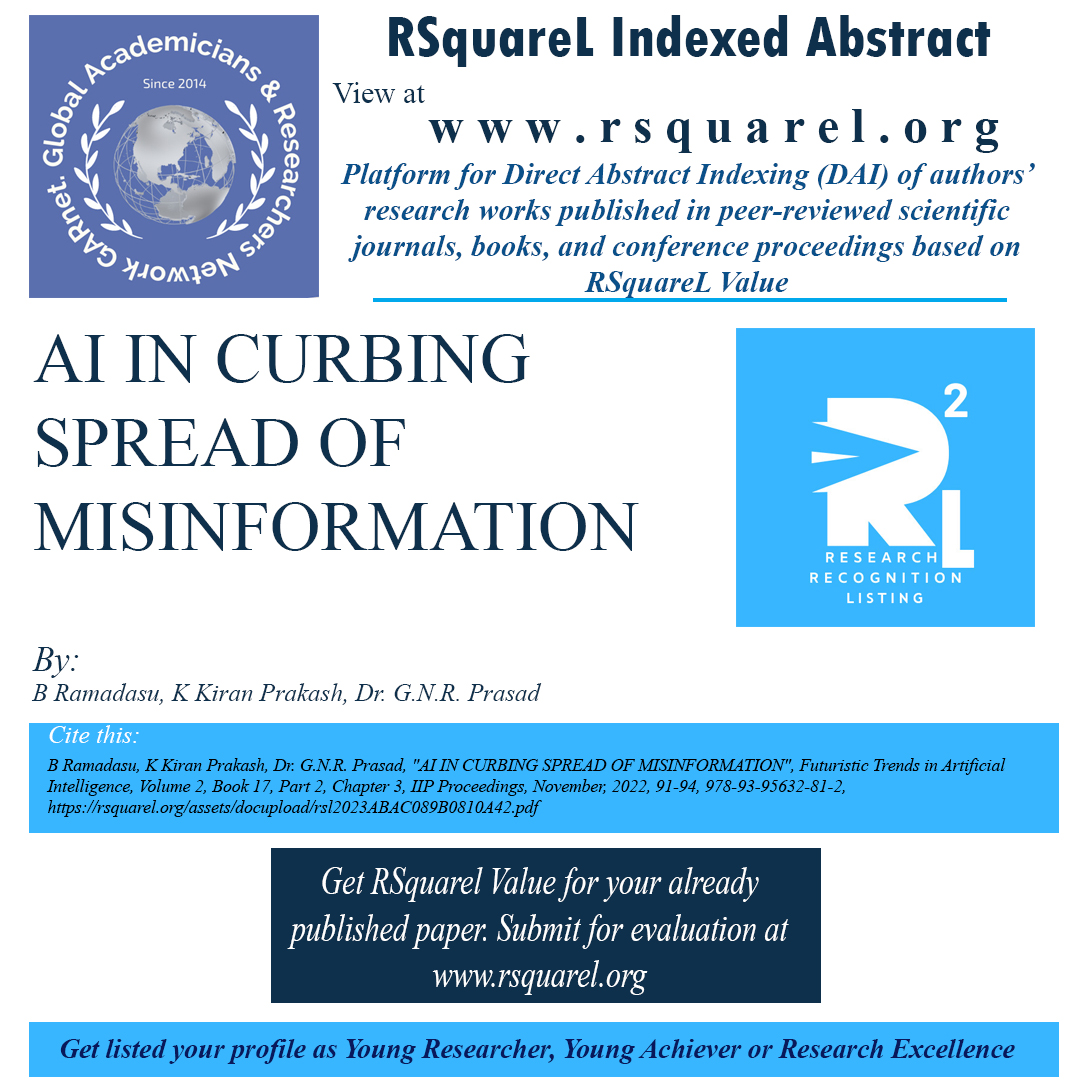editedbook
Publication: IIP Proceedings Year: 2022, Month: November Page No: 91-94, ISSN/ISBN: 978-93-95632-81-2, DOI/Link: https://rsquarel.org/assets/docupload/rsl2023ABAC089B0810A42.pdf
AI IN CURBING SPREAD OF MISINFORMATION
Area/Stream: Artificial Intelligence, Authors: B Ramadasu, K Kiran Prakash, Dr. G.N.R. Prasad Keywords: Artificial Intelligence, Machine learning, Fake news, chatbots Book Name /series: Futuristic Trends in Artificial Intelligence, Volume 2, Book 17, Part 2, Chapter 3Publication: IIP Proceedings Year: 2022, Month: November Page No: 91-94, ISSN/ISBN: 978-93-95632-81-2, DOI/Link: https://rsquarel.org/assets/docupload/rsl2023ABAC089B0810A42.pdf
Abstract:
According to Nilsen, there are a number of communication channels that can reduce the availability of meaningful choice. If a corporation gives stakeholders erroneous or biassed information, its decision-making process may be compromised. Prejudice, ambiguity, and emotionally charged language are some communication strategies that may distort meaning or instil unjustified fear in the listener. Public relations experts must use ethical communication techniques built on the ideas of openness and transparency. Artificial intelligence (AI) has become a potent weapon in the fight against the ever-increasing threat of the "infodemic." AI tools can recognise bogus videos, spot fake news, and use chatbots to spread accurate information. Information spreads quickly in the digital era, but false information spreads like wildfire. The ease of communication has made it possible for fake news to spread quickly, and the situation has spread to the point that it resembles an infodemic or a pandemic of information. False information travels considerably more quickly than the truth and reaches a larger audience. In other words, on Twitter and perhaps other social media sites, bogus news outweighs the truth. Furthermore, it is difficult and time-consuming to actively separate bogus news from legitimate news. The procedure may be approached using a few machine learning (ML) classification approaches, however consistently training entire models requires a significant amount of time. It is possible to divide the process of telling fake news from true news into smaller phases, and by automating these processes, the work becomes easier to understand. When disinformation is spread through video, the issue is magnified since it is so convincing and convincingly real that even the most intelligent and sceptical minds can be duped. These artificial intelligence-generated movies of actual individuals acting and speaking false things are referred to as deep fakes. Like many other modern issues, the solution to the rumour-mongering issue is found in artificial intelligence. Here are some of our better examples of how AI can help stop the spread of incorrect information.
Cite this: B Ramadasu, K Kiran Prakash, Dr. G.N.R. Prasad,"AI IN CURBING SPREAD OF MISINFORMATION", Futuristic Trends in Artificial Intelligence, Volume 2, Book 17, Part 2, Chapter 3, November, 2022, 91-94, 978-93-95632-81-2, https://rsquarel.org/assets/docupload/rsl2023ABAC089B0810A42.pdf
Views: 4174
Download File
News
